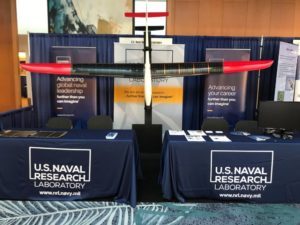 Groundbreaking military research is giving drones their day in the sun – or at least half a day.
Groundbreaking military research is giving drones their day in the sun – or at least half a day.
The U.S. Naval Research Laboratory is empowering drones to stay aloft more than 12 hours using energy from the sun and wind. Although the research is targeting military applications, the solution is likely to trickle down into commercial sectors in the future.
“One of the common complaints that we hear across industry and the warfighters is that they want aircraft to fly longer,” said Dr. Dan Edwards, senior aerospace engineer in NRL’s Tactical Electronic Warfare Division. “One great way to do this is to capture atmospheric wind energy or solar energy to extend the endurance.”
The breakthrough is the culmination of a 10-year effort to “teach” autonomous drones how to fly above atmospheric thermals, mimicking bird flight.
The fixed-wing drone can fly a way-point route and circle over rising air when it detects a thermal updraft.
“Sunlight heats up the surface of the Earth, which in turn heats the lowest layer of air,” Edwards said. “That warm air eventually bubbles up as a rising air mass, called a thermal, which the airplane can use to gain altitude. It’s indirectly solar-powered.”
The drone is also fueled by solar power via super-efficient, photovoltaic cells. NRL Photovoltaics Section chief Phil Jenkins explains:
“For a long time, even though there has been solar aircraft since the 1990s, the efficiency of the solar cells wasn’t high enough to pay the mass penalty, meaning you weren’t getting enough energy to justify the additional mass. But over the last 10 years, that has really changed. The cells have gotten more efficient and lighter. “Between [wind and solar power], you have the most robust energy-harvesting platform, because sometimes you’ll be able to soar and sometimes you won’t have the solar, and vice versa.”
Extended flight missions will allow the military to gather more surveillance and reconnaissance data and may be deployed for civilian uses such as pipeline or railway inspection as well as search-and-rescue.
“The technology could be very useful for coastal monitoring or pollution monitoring, for example,” said Jenkins. “In these cases, you just want eyes up there for hours and hours, and Solar-Soaring makes that possible.”
Jason is a longstanding contributor to DroneLife with an avid interest in all things tech. He focuses on anti-drone technologies and the public safety sector; police, fire, and search and rescue.
Beginning his career as a journalist in 1996, Jason has since written and edited thousands of engaging news articles, blog posts, press releases and online content.
Email Jason
TWITTER:@JasonPReagan
Subscribe to DroneLife here.







[…] DRONELIFE […]